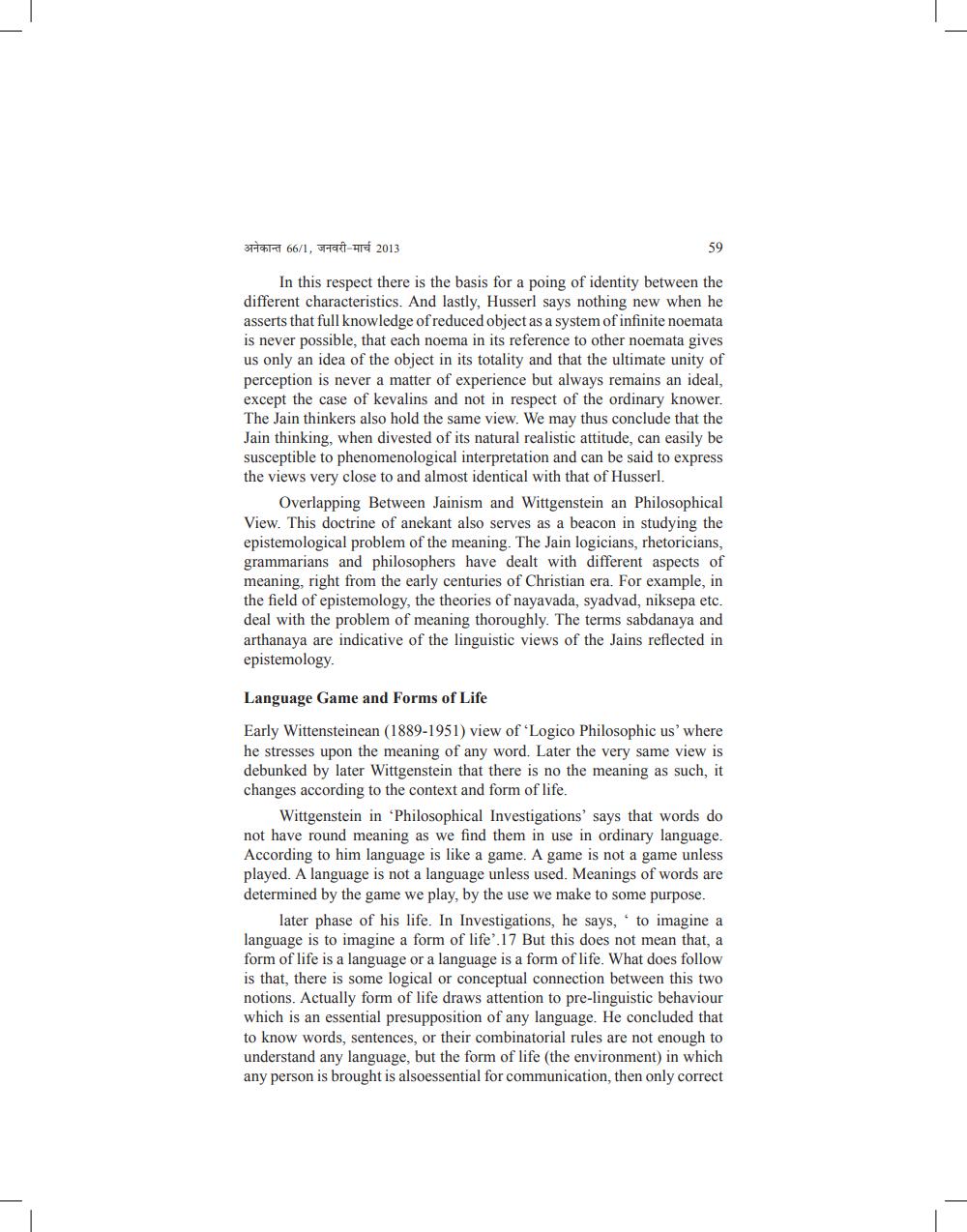________________
314617 66/1, 4794-HR 2013
In this respect there is the basis for a poing of identity between the different characteristics. And lastly, Husserl says nothing new when he asserts that full knowledge of reduced object as a system of infinite noemata is never possible, that each noema in its reference to other noemata gives us only an idea of the object in its totality and that the ultimate unity of perception is never a matter of experience but always remains an ideal, except the case of kevalins and not in respect of the ordinary knower. The Jain thinkers also hold the same view. We may thus conclude that the Jain thinking, when divested of its natural realistic attitude, can easily be susceptible to phenomenological interpretation and can be said to express the views very close to and almost identical with that of Husserl,
Overlapping Between Jainism and Wittgenstein an Philosophical View. This doctrine of anekant also serves as a beacon in studying the epistemological problem of the meaning. The Jain logicians, rhetoricians, grammarians and philosophers have dealt with different aspects of meaning, right from the early centuries of Christian era. For example, in the field of epistemology, the theories of nayavada, syadvad, niksepa etc. deal with the problem of meaning thoroughly. The terms sabdanaya and arthanaya are indicative of the linguistic views of the Jains reflected in epistemology.
Language Game and Forms of Life
Early Wittensteinean (1889-1951) view of 'Logico Philosophic us' where he stresses upon the meaning of any word. Later the very same view is debunked by later Wittgenstein that there is no the meaning as such, it changes according to the context and form of life.
Wittgenstein in Philosophical Investigations' says that words do not have round meaning as we find them in use in ordinary language. According to him language is like a game. A game is not a game unless played. A language is not a language unless used. Meanings of words are determined by the game we play, by the use we make to some purpose
later phase of his life. In Investigations, he says, to imagine a language is to imagine a form of life'.17 But this does not mean that, a form of life is a language or a language is a form of life. What does follow is that, there is some logical or conceptual connection between this two notions. Actually form of life draws attention to pre-linguistic behaviour which is an essential presupposition of any language. He concluded that to know words, sentences, or their combinatorial rules are not enough to understand any language, but the form of life (the environment) in which any person is brought is alsoessential for communication, then only correct




